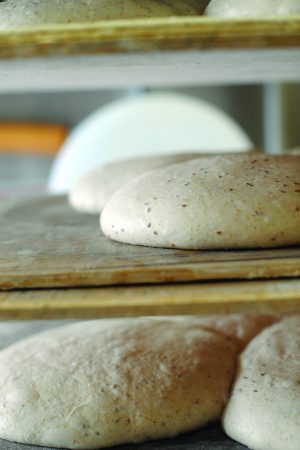 Gluten is a complex protein composite found predominantly in the endosperm of wheat, barley, and rye grains. It plays a crucial role in various baking and culinary applications, contributing to the structure, elasticity, and texture of dough and finished products. Gluten is formed when two primary protein groups, gliadins and glutenins, interact with water and each other during dough mixing and kneading.
Gluten is a complex protein composite found predominantly in the endosperm of wheat, barley, and rye grains. It plays a crucial role in various baking and culinary applications, contributing to the structure, elasticity, and texture of dough and finished products. Gluten is formed when two primary protein groups, gliadins and glutenins, interact with water and each other during dough mixing and kneading.
Gliadins are monomeric proteins responsible for dough extensibility, while glutenins are polymeric proteins responsible for dough elasticity and strength. The unique viscoelastic properties of gluten arise from the interplay between these proteins, which form a continuous protein network capable of trapping gases, such as carbon dioxide, produced during fermentation. This gas retention contributes to dough leavening, resulting in the characteristic rise and texture of baked goods, such as bread, pasta, and pastries.
Gluten is of great nutritional importance, providing a significant source of dietary protein, particularly in wheat-based diets. However, gluten can also trigger adverse reactions in some individuals. Celiac disease, for example, is an autoimmune disorder in which the ingestion of gluten leads to damage in the small intestine, causing various gastrointestinal and extraintestinal symptoms. Non-celiac gluten sensitivity and wheat allergy are other conditions that may be triggered or exacerbated by gluten consumption.
In response to the increasing prevalence of gluten-related disorders and the growing demand for gluten-free products, food scientists and researchers have developed various gluten-free alternatives using alternative grains, such as rice, corn, sorghum, and quinoa, or starches derived from potatoes or tapioca. These products often require the addition of hydrocolloids, such as xanthan gum or guar gum, to mimic the viscoelastic properties of gluten in dough systems.
Gluten is a complex protein composite that plays a vital role in the structure, elasticity, and texture of dough and finished products. While it is a significant source of dietary protein, gluten can also cause adverse reactions in some individuals, leading to the development of gluten-free alternatives for those who require a gluten-free diet. Understanding the properties and functionality of gluten is essential for both traditional and gluten-free baking and culinary applications.



